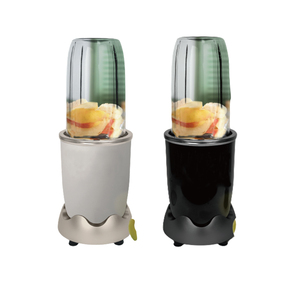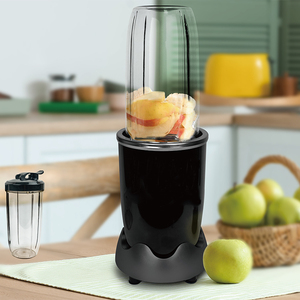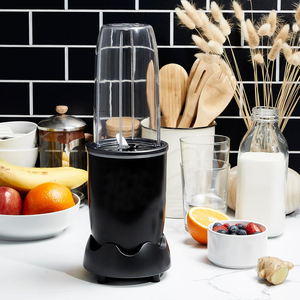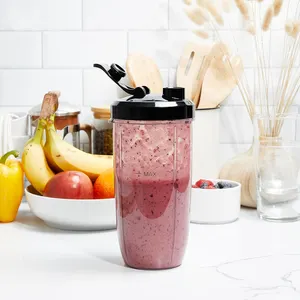
All categories
Featured selections
Trade Assurance
Buyer Central
Help Center
Get the app
Become a supplier

(1168 products available)



















































A hand crank food processor is a manual kitchen tool that helps in chopping, grating, and blending food. It is operated by turning a hand-crank handle. The types of hand-crank food processors include:
Manual choppers:
These are simple tools, mostly used for chopping meat and vegetables. The crank is connected to a set of blades or a chopping mechanism inside the container. The user turns the crank to move the blades or chopper. The more the user turns the crank, the finer the food is chopped. These devices are compact and easy to use, making them popular for daily kitchen tasks.
Vegetable mills:
The vegetable mill is a hand-powered food processor. It has a crank and a set of screens or mesh at the bottom. When the crank is turned, the blades pass through the screens, mashing and pureeing the food. Vegetable mills are great for making baby food, mashed potatoes, or tomato puree. They give a smooth and even texture, so they work well for soft vegetables and fruits.
Crank food processors:
A crank food processor has a more advanced design than the others. It has multiple attachments and functions. Some models have slicing and grating attachments. The user can slice vegetables or grate cheese by changing the attachment. These processors give users more options for food preparation.
Hand-cranked blenders:
These devices are for blending drinks and making purees. They have blades at the bottom, just like electric blenders. The difference is that the user moves the blades by turning the hand crank. These blenders are great for making smoothies, shakes, and sauces. They give users control over the blending speed and consistency.
Hand crank graters and slicers:
These devices are specialized for grating and slicing only. They have a rotary handle and various grating or slicing drums. The user attaches the food to the device and turns the handle to grate or slice the food. These tools are perfect for grating cheese, slicing potatoes, or shredding cabbage.
The design of the hand-crank food processor revolves around simplicity and functionality. It comprises a number of key components, each critical in ensuring the machine's effective operation.
Materials
Hand-crank food processors are generally made of metal and plastic. Metal food processors are durable and can withstand heavy-duty use. Plastic food processors are lightweight and easy to use.
Bowl
The bowl is the main part of the food processor. It is usually made of plastic or glass and can hold a large amount of food.
Blade
Blades are sharp and made of stainless steel to ensure they do not rust. They can chop, mix, and puree foods.
Crank handle
The crank handle is often made of wood or plastic. It is designed to provide a comfortable grip so that users can easily turn it.
Lid
The lid is usually made of plastic or metal. It covers the bowl to prevent food from spilling out during operation. Some lids have safety locks that only allow the machine to work when the lid is properly locked.
Base
The base is usually made of plastic or metal. It supports the machine and houses the crank mechanism. The base is designed to be stable and to prevent the machine from toppling while in use.
Vent
Some models have vents in the lid to allow steam to escape when processing hot food. This prevents pressure buildup inside the bowl.
Hand-crank food processors have many uses in different fields. They meet the needs of those who prefer manual processing. They are popular in households and commercial settings.
Functionality and Features:
When choosing a manual food processor, it's important to consider the functionality and features. Users should assess their cooking needs and look for features such as chopping, mincing, grinding, and mixing. It's beneficial to choose a processor that includes multiple features in one. Additionally, users should consider special features like different speed settings, interchangeable blades, and attachments for added versatility.
Quality and Durability:
Next, users should evaluate the quality and durability of the food processor. It's advised to choose a processor that is made with quality materials and has a sturdy build. Users should look for processors that have rust-resistant blades and durable crank handles. A well-built processor will last longer and provide consistent performance over time.
Size and Capacity:
When choosing a food processor, users should also consider the size and capacity. Users should evaluate their kitchen space and choose a processor that is compact and easy to store. If users frequently cook for a large family or group, they should choose a processor with a larger capacity. A bigger bowl will allow users to process more ingredients at once.
Ease of Use and Cleaning:
Ease of use and cleaning are also important factors to consider when choosing a food processor. Users should look for processors that have user-friendly designs and simple assembly. A processor with a comfortable grip handle will be easier for users to crank. Additionally, users should choose processors that can be easily disassembled and cleaned.
Brand and Budget:
Lastly, users should consider the brand and budget. It's advised to choose a reputable brand and ensure the food processor has quality assurance. Additionally, users should choose a product that is suitable for their budget. Hand-crank food processors are available at different price points. It's important to find one that provides the best value for money.
Q1: What are the benefits of a hand-crank food processor?
A1: One benefit of using a hand-crank food processor is that it does not rely on electricity; hence, it is suitable for off-grid cooking. It still retains the natural taste of food and helps preserve nutrients.
Q2: How does a manual food processor work?
A2: A manual food processor works by attaching and securing the desired blade or disk, placing the ingredients into the bowl, and turning the hand-crank or rotating the handle to chop, slice, or puree the food.
Q3: What types of food can be processed using a hand-crank food processor?
A3: A hand-crank food processor can process various foods, including vegetables, fruits, nuts, herbs, and cooked meats.
Q4: Is a hand-crank food processor easy to use?
A4: Yes, hand-crank food processors are user-friendly and easy to operate. They require no electricity and are simple to use, clean, and store.
Q5: How do users clean and maintain a hand-crank food processor?
A5: To clean a hand-crank food processor, disassemble the parts and wash them in warm, soapy water, rinsing thoroughly under clean water. They should be dried before reassembling. Users should periodically wipe the crank and base with a damp cloth and oil moving parts lightly to maintain them.